A visit to Tyddyn Gwladys and Gwynfynydd
Coed-y-Brenin Forest is rightly famous for it's world class mountain bike trails, a first anywhere in Britain -or the world for that matter. The inspired idea of Dafydd Davis, a Blaenau Ffestiniog outdoor adventurer, the complex has developed from one experimental run, growing into to a web of trails with evocative names like "False Teeth" and the "Beast of Brenin". I'm an old roadie, but sitting in the wonderful cafe overlooking the valley, it warmed my heart to see all the enthusiastic dirt bikers getting ready to take on the gnarly stuff.
But as you might guess, we were there for something else -and not just the excellent food at the cafe. Equally famous among mine explorers, the honeycomb of workings in the upper reaches of the infant Mawddach weave a fascinating spell as the river surges through the Coed. The woodlands are dotted with remains, adits and stopes; the only drawback is that the ground is extremely hard going, a mixture of tight conifers, birch scrub and almost impassable clear-felling, but well worth the bruises and scratches.
![]()
Today's expedition was purely a recce, so we were travelling light. We parked up in the Tyddyn Gwladys forestry car park and took the track in the direction of the eponymous mine, or "Ferndale" as it is now titled. The first structure that came into view was what appeared to be a ruined victorian hunting lodge with the remains of an impressive staircase at the front. An old Land Rover sat outside, gently settling on it's rusty springs. I took a closer look at the Landie, to find that the chassis had been augmented with some wood and a few lengths of Rebar, plus some string. Not an MOT candidate, then.
We walked further on and came to the old barracks, now apparently in use as a hostel. Stern notices on the doors warned against "Bike Maintenance" inside.Odd, really, since that would surely be a sine qua non for anyone staying here in the forest.
Walking on past a bend in the track and the buildings of the mine came into view. They are much modernised, of course, but are still recognisably the same as in the old photograph here. The mine was originally opened in 1833 as a lead mine; galena is the dominant ore mineral and carries higher silver values than elsewhere in the district. However, as well as copper and zinc in the lode, gold is also found. Worked only intermittently, the recorded output is 12 tons of lead in 1848, 9 tons of lead in 1851 and 43 tons of gold ore producing 7 ounces of gold in 1899, the latter being the final year of working.
![]() |
| The mine at Tyddyn Gwladys, probably about 1870. There's little trace now of the lower structures, but the ones near the trackway are still there. |
The river runs close to the trackway here, a fast flowing, bustling watercourse full of energy and noise.
Two adits can be found up the side of the thickly wooded hill, with stoping to daylight at the top. The adits are open, but not very inspiring, with deep shafts down to the lower levels. Back on the trackway, the first building at the mine is the old smithy, now converted into a lovely private house. On the other side of the track an adit opens, half blocked with a stone cill. The remainder of the structures for the mine are converted into holiday accomodation and look very well cared for, although for sale at the time of our visit.
![]()
Walking further on, the track becomes more level and some strange structures with immensely thick walls come into view on the left. Nature has almost reclaimed them and they are covered in vegetation and fallen trees, but with a little imagination, their purpose can be teased out of them. The interested onlooker is helped by a very clever feature, a set of waymarkers referring to an MP3 track that can be downloaded from the Forestry Commission web site onto a mobile device. The narrative is angled at the very casual visitor, but contains enough nuggets of pay dirt to be able to solve the riddle of the buildings here.
![]() |
| The water-powered Corning House, where sheets of gunpowder were passed through a toothed roller ‐ that sat within the ornate brick arches ‐ to form granules, which were then sieved into regular‐sized grains of gunpowder. |
And a very interesting story it is. Apparently, these are the remains of a gunpowder works, set up here in 1887 with a view to supplying the region with black powder. Given that the world famous Glasdir copper mine is just down the road and the gold mines of Cefn Coch scarcely more distant, it might have seemed like a good idea. Sadly, the show was spoilt by the invention of gelignite and TNT . In 1892, the whole enterprise closed.
Listening to the MP3, the buildings began to make sense. There are some snippets of first hand accounts, too, like the one from mine worker Hugh Pugh, eventually a foreman at one of the mines in the valley:
“I started work in 1888 with a lot of boys under 15. We used to meet on the bridge at 3am on Monday with a weeks rations in our white wallets, including a big homemade loaf. We would walk 8 ½ miles to start at 7 o’clock and we used to have a few minutes rest halfway.
Once we found a donkey meeting us on his own and found that 3 miners had taken the donkey to carry their wallets halfway and turned him back on his own”(grateful thanks to Forestry Commission Wales for the above quote.)![]() |
| The Incorporating Mill |
The building that fascinated me was the last one before the track curves to cross the Afon Pistill Cain. Elevated above the trackway is a six-compartment structure with a vaulted tunnel running beneath. This was the "Incorporating Mill".
Within this long building the gunpowder mixture was moistened and ground between large iron wheels, called edge runners, to create a ‘mill cake’. So dangerous was this part of the manufacturing process that the makers were forbidden to grind more than 42 lbs – roughly the weight of an average 4 year old ‐ at any one time. In the floor of each room an opening reveals a brick vaulted tunnel below. Here a shaft, powered by a waterwheel at the northern end of the building, drove the edge runners. The water wheel was a large one, at least if the pit is anything to go by.
![]() |
| The vaulted tunnel that housed the waterwheel-powered shaft underneath the mill. |
![]() |
| The wheelpit |
It was hard to hear ourselves speak, as the river roared below, joining with the Mawddach. Little wonder water power was the motive power of choice in the valley. Apparently, the river runs very high occasionally, the waters reaching to just below the deck of the iron bridge spanning the gorge..
Crossing the bridge led us to an area that had my mine senses tingling. Although there didn't at first seem to be anything to be seen, we left the trackway and explored the ground in the angle made by the join of the two rivers. A complex of foundations and machine bases soon revealed themselves, and we realised that we were looking at the remains of the original Gwynfynydd Gold Mine Mill. Surviving photos show a typical C19th multi-storey corrugated iron structure. Our friend Hugh Pugh, foreman at the mine, takes up the story again:
“The power was water turbines, 2 boilers and steam engines. The ore was tipped on the screen; the course going to the 2 stone breakers and crushed to 1 ½ inches into a Bing[?] underneath holding thousands of tons of supply for the night shift. Breakers only working days.
The ore was crushed to a powder and washed with water through very fine screens to the tables where there was copper plates covered in quicksilver. As the gold passed over the tables, the gold would stick to the quicksilver.
This we called amalgam. (It was) collected twice a day and put in wash‐leathers. The oils were squeezed out and made into balls about 2 ½ inches, about 35 ounces of which 1 in 3 was gold and put in the safe until the end of the month.
The amalgam would be taken to the assayer where it would be put in a rotator to get the silver from the gold – the silver to be used again. The gold would then be put in a plumbago crucible to be melted and poured out to ingot mould and when cooled the gold could be taken out and weighed by the manager and taken to the bank.”![]() |
| This is the scene in the late C18. There is virtually no trace today, apart from the foundations. |
![]() |
| The confluence of the Afon Gain and the Mawddach today. |
The remains of screens and a large pipe carrying water for a Pelton wheel can be seen, although these are more than likely later additions after Hugh's time. Clearly, this was a big operation. Gold was discovered here in 1860, but the biggest find was in 1880 when the mother lode was struck and nearly 9,000 ounces were refined; worth a few million pounds at today's prices. Production continued, off and on until 1999, although from a site further north up the valley. Gold is still reputed to be there, deep under the hillside, but legislation controlling pollution of the Mawddach makes it impossible to sink shafts or continue work. The atmosphere in the mine is also dangerous due to the cocktail of mineral deposits oxidising and producing lethal gases, making health and safety issues a very real consideration. The mine continued for a while as a tourist mine, but inaccessibility and the deteriorating state of the mine meant that it had to close.
![]()
Today, the buildings present a fascinating and yet poignant spectacle. The half-buried rails leading from the tip to the adit amid classic corrugated iron mine architecture are a mine explorer's dream, as if the clock has been turned back and we can gaze with half closed eyes and imagine the bustling of activity and the sound of blasting. Ironically, the site was the subject of a failed attempt to build a village of timber holiday lodges, rather like the less-than edifying cabin village at Bronaber. Plans were drawn up to build over the tips and stopes with little consideration of the fact that said tips were full of very unhealthy pollutants, and that many of the tips were little more than filled in shafts and stopes. In a deposition for planning, the developer promised to rid the area of the "eyesores" of the mine buildings. Well, it's all in the eye of the beholder, I guess.
The plans failed due to a very spirited opposition from the Welsh Mines Society and some environmental officers of the council who discovered rare lichens on the site. Although I also suspect that the cost of building a road and the economic downturn had a hand in the scheme being abandoned. The site as it is now is decaying quickly. It is also highly dangerous and exploration is not recommended, the river bank is eroded and unstable. It's a great shame, (but not surprising due to the state of the economy) that suggestions by the WMS that the site be preserved as a museum have not come to fruition either.
![]() |
| A view from the gated adit showing the considerable acid mine drainage problem. |
Incidentally, the adits here are not to be entered under any circumstances, as the state underground is that any disturbance results in pollution being discharged into the Mawddach. The river is watched keenly for any sign of pollution and exploration would not be doing anyone any favours. On a more optimistic note, there are many fine remains to be explored above ground and felling has made the incline to the upper stopes just about navigable. It requires care and vigilance, but it is a fascinating site.
There are some more mines upstream from Gwynfynydd, but our legs were tired after blundering about in the boskage. We'll have to return soon to this magical corner of Coed-y-Brenin.
A link to the Forestry
Audio TrailsThe
Cafe at Coed-y-Brenin
The
Goldmines and Waterfalls Walk Dafydd Davis, Bike Trail Designer![]() |
| A bank of cap lamp chargers inside the mine building |
![]() |
| Shelving that had once stored wellington boots for visitors. |
.jpg)
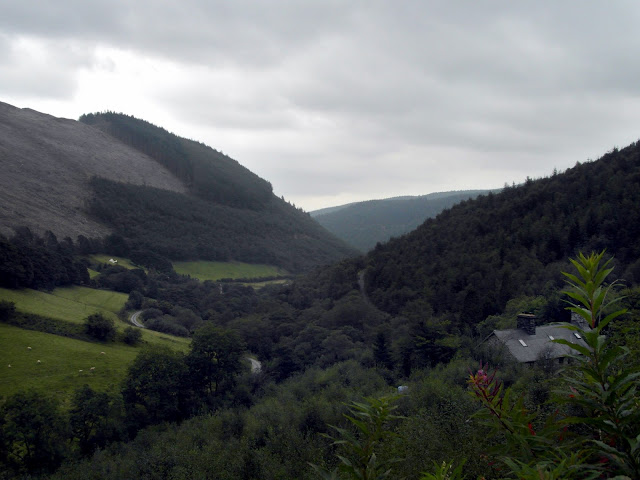.jpg)
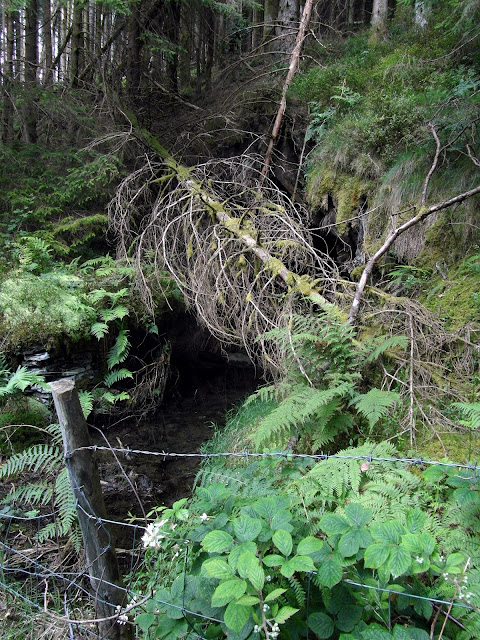.jpg)
.jpg)
.jpg)
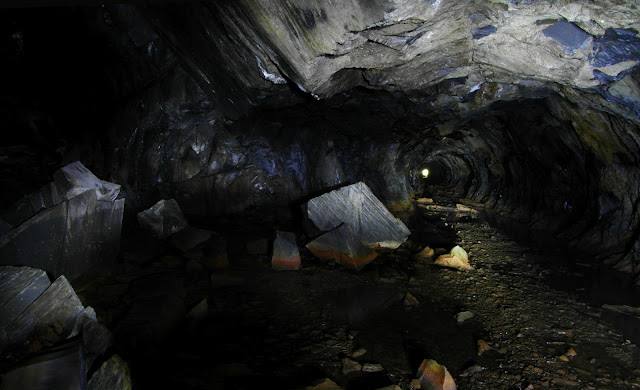.jpg)
.jpg)
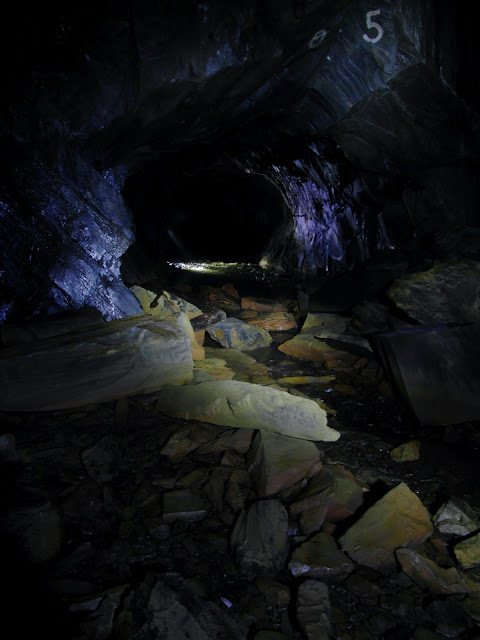.jpg)
.jpg)
.jpg)
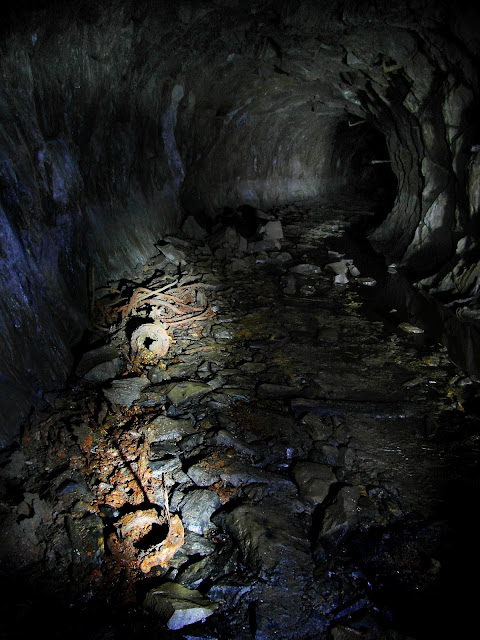.jpg)
.jpg)
.jpg)
.jpg)
.jpg)
.jpg)
.jpg)
.jpg)
.jpg)
.jpg)

.jpg)
.jpg)
.jpg)
.jpg)
.jpg)
.jpg)
.jpg)
.jpg)


.jpg)
.jpg)
.jpg)
.jpg)

.jpg)
.jpg)
.jpg)
.jpg)
.jpg)
.jpg)
.jpg)
.jpg)
.jpg)
.jpg)
.jpg)
.jpg)
.jpg)
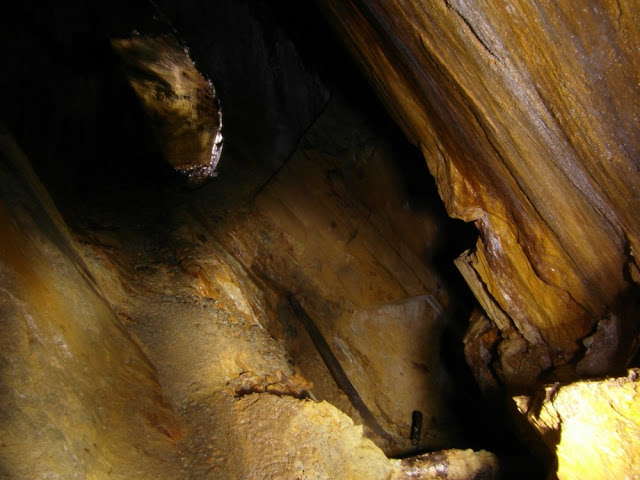.jpg)
.jpg)
.jpg)
.jpg)



.jpg)
.jpg)
.jpg)
.jpg)
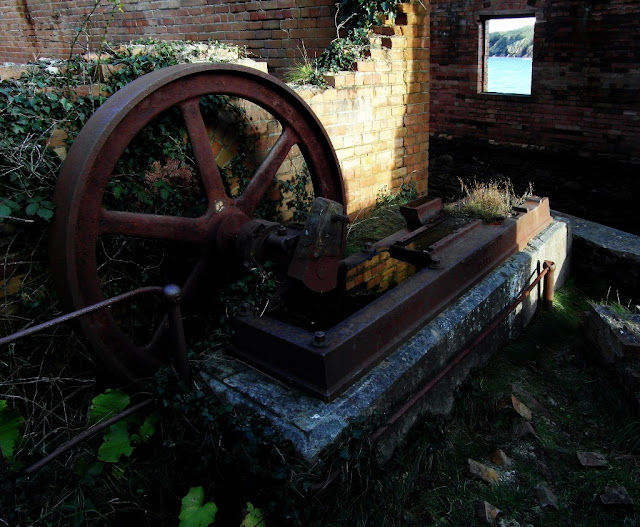.jpg)
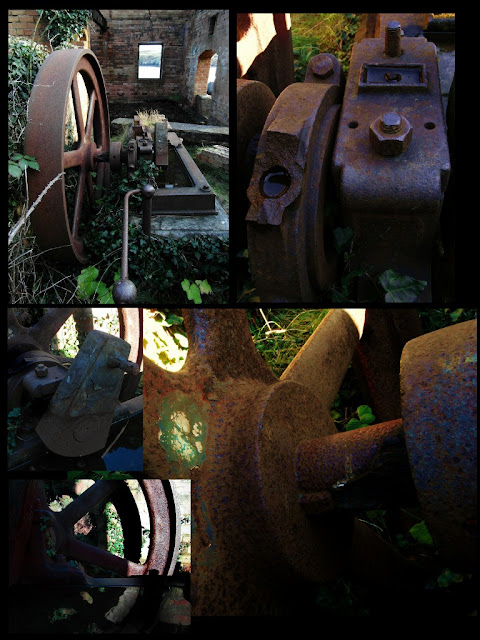.jpg)
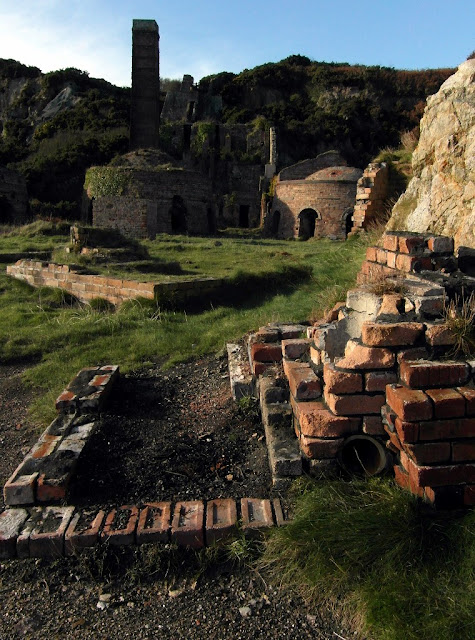.jpg)
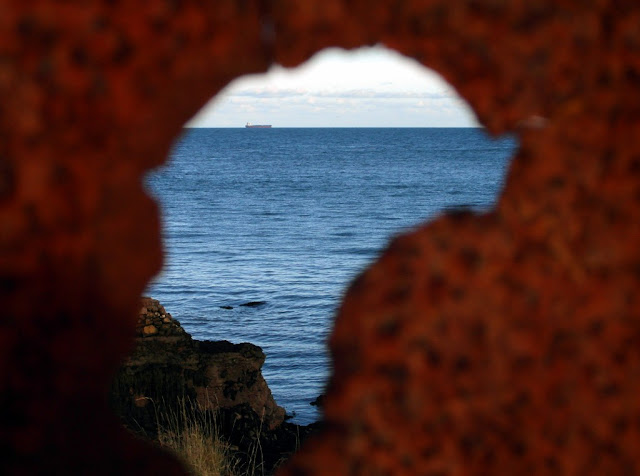.jpg)
.jpg)
.jpg)
.jpg)
.jpg)
.jpg)
.jpg)






.jpg)
.jpg)
.jpg)
.jpg)
.jpg)
.jpg)
.jpg)
.jpg)
.jpg)
.jpg)
.jpg)
.jpg)
.jpg)
.jpg)
.jpg)
.jpg)
.jpg)
.jpg)
.jpg)
.jpg)
.jpg)
.jpg)
.jpg)
.jpg)
+(768x1024).jpg)
.jpg)
.jpg)
.jpg)
.jpg)
.jpg)
.jpg)
+(1024x650).jpg)
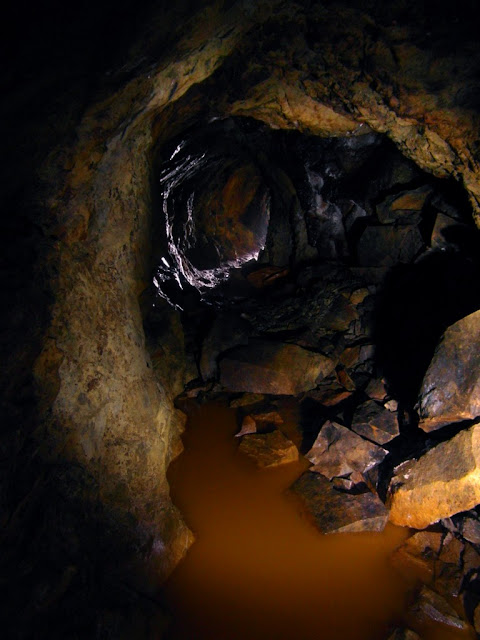.jpg)
+(850x638).jpg)
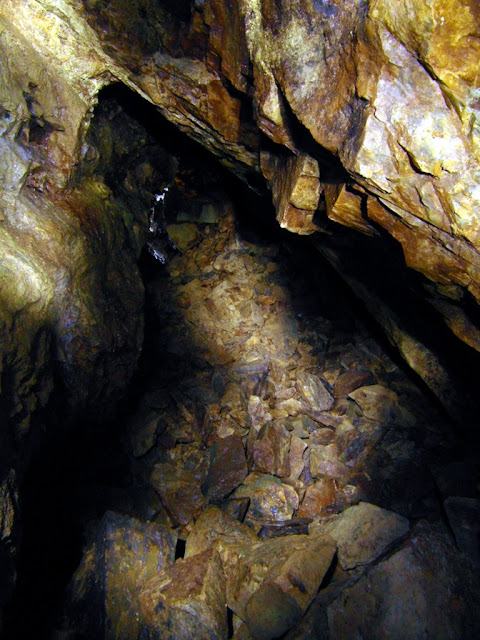.jpg)
.jpg)
.jpg)
.jpg)
.jpg)


.jpg)
.jpg)
.jpg)
.jpg)
.jpg)
.jpg)
.jpg)
.jpg)
.jpg)
.jpg)
.jpg)
.jpg)
.jpg)
.jpg)
.jpg)
.jpg)
.jpg)
.jpg)

.jpg)
.jpg)
.jpg)
.jpg)
.jpg)
.jpg)
.jpg)
.jpg)
.jpg)
.jpg)
.jpg)
.jpg)
.jpg)
.jpg)
.jpg)
.jpg)